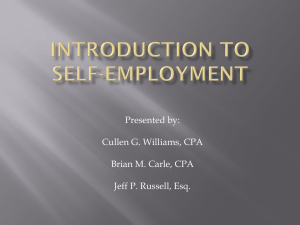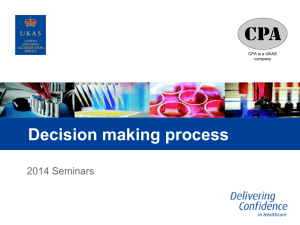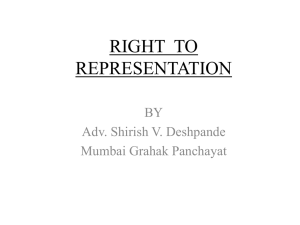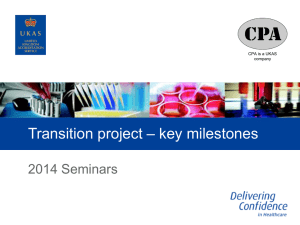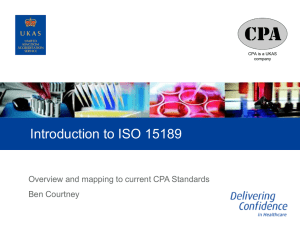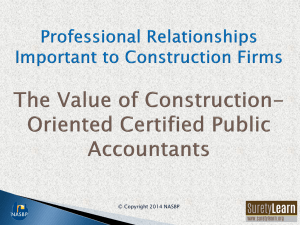Laboratory Accreditation – An Assessors Perspective
advertisement
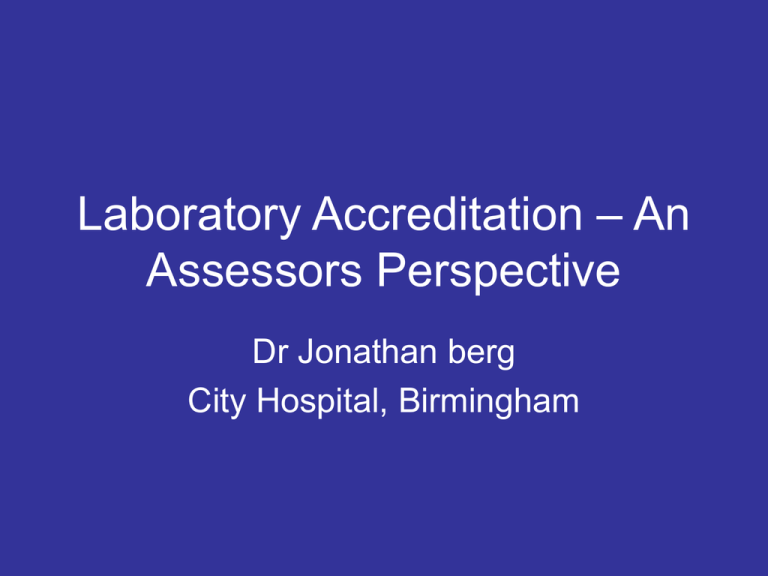
Laboratory Accreditation – An Assessors Perspective Dr Jonathan berg City Hospital, Birmingham Areas to Consider • • • • Clinical Pathology Accreditation Ltd Quality System CPA Standards Assessment Process Explained Accreditation Basics • System to show a healthcare facility has reached standard required to carry out prescribed function. Three Elements: 1. Assessment Board 2. Set of Standards 3. Assessment Process – assessors and system of registration and inspection Standards for Laboratories The new international standards ISO 15189 Quality management in the medical laboratory ISO 17025:2000 General requirements for the competence of testing and calibration laboratories ISO 9001:2000 series Quality management systems - requirements CPA Ltd • Set up by UK professional bodies 1991: RCPath, ACB, ACP, IBMS etc. • CPA and United Kingdom Accreditation Service (UKAS) formed a partnership in 2002. • NHS Laboratories must be registered for accreditation. • Main office in Sheffield. • New Regional Organisation now established. • Accredits Pathology Departments and EQA Schemes. • External audits against a set of standards. CPA Organisation CPA (UK)Ltd BOARD CENTRAL OFFICE CPA / UKAS Partnership Council Professional Advisory Committee LABORATORY ACCREDITATION United Kingdom Accreditation Service (UKAS) CPA(EQA) Advisory Committee EQA SCHEMES MEDICAL LABORATORIES CPA Assessment Procedure • Assessors: Mixture of paid and peer “professional” assessors. • New Standards – 2003. • New Processes: Implemented in 2005/06. • Assessment Process: Centres on sampling of the quality system audits. Assessors • Old Style: All laboratory staff – Consultant & BMS - pair per discipline. • New Style: CPA Employee assessors and input from laboratory peer review. • Why Change?: peer reviewers scarce, lack of consistency, more professional. CPA Accreditation Means…… • Full inspection every 4 years. • Interim inspection every 2 years. • Updated registration form every year with annual management review. • Significant changes in service should be notified to CPA office when they occur. The CPA Standards A. Organisation and Quality Management System B. Personnel C. Premises and Environment D. Equipment, Information Systems and Materials E. Pre-Examination Process F. Examination Process G. Post Examination Process H. Evaluation and Quality Assurance A. ORGANIZATION AND QUALITY MANAGEMENT SYSTEM B. PERSONNEL C. PREMISES AND ENVIRONMENT D. EQUIPMENT, INFORMATION SYSTEMS & MATERIALS U S E R R E Q U I R E M E N T S H. EVALUATION AND QUALITY ASSURANCE E. PRE EXAMINATION PROCESS F. EXAMINATION PROCESS G. POST EXAMINATION PROCESS S A T I S F A C T I O N U S E R Assessment Visit Process • Examination of paperwork. • Audits Vertical Horizontal Examination • Meetings with CEO and user group Quality System • Described by Quality Manual & includes a Quality Statement. • Encompasses all standards. • Should describe what is actually in place. Vertical Audit • Follows a sample through laboratory. • Pre-analytical, analytical and post analytical phases. • When problems are found then in-depth investigation. • Takes about 3 hours. • You should all have one on your lab wall! Horizontal Audit • Looks in detail at one aspect: e.g. Sample reception, Meetings Assessor Findings • Critical non-compliance. • Non-critical non-compliance. • Observation. Clinical Pathology Accreditation (UK) Ltd VERTICAL AUDIT FORM CPA Reference code XXXX Procedure observed Report number XXXX-VARxxx Name of person observed Department Title Name of assessor Section Date and signature Instructions 1. Select a laboratory accession number either from the computer record or from work sheets/day book etc. 2. Trace back the process of specimen handling from receipt to report Audit area Information for users Standard E 1.1 Is there information readily available to users relating to specimen requirements for th ese tests? Check:- User handbook . Specimen transportation Are there procedures for specimen transport? Is there evidence of procedures meeting all Health and Safety requirements? Check:Model rules for couriers, porters and general publi c . Packaging , labelling and dispatch procedures Procedures in the event of spillage Incident reporting procedure s E4 Records/methods checked and procedures witnessed Findings Corrective and/or preventive action Action completed Signed/dated Non Compliance Sheet • Findings written down by assessor. • Discussed and agreed at closing meeting • Assessor sends to CPA Office: Non-compliance forms Overview report Report on meeting with users Meeting with Chief Executive

